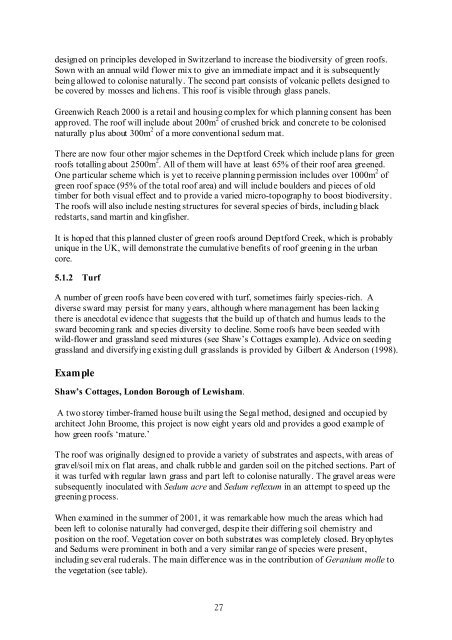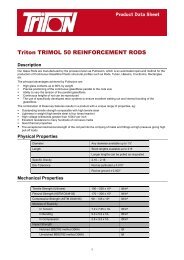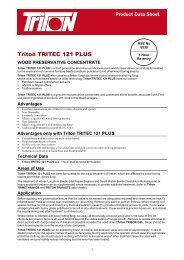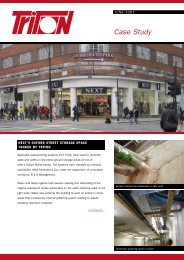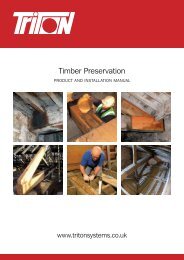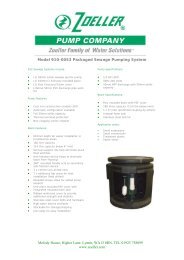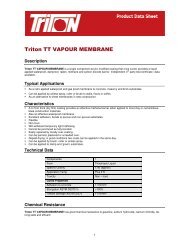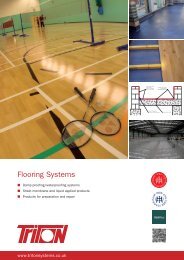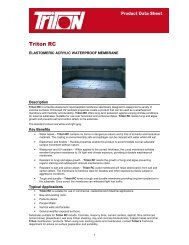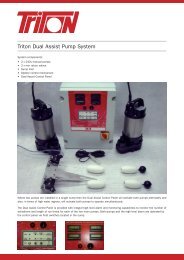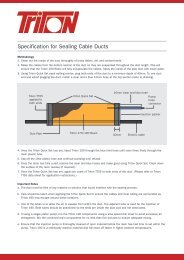Green Roofs - GreenSpec
Green Roofs - GreenSpec
Green Roofs - GreenSpec
- No tags were found...
You also want an ePaper? Increase the reach of your titles
YUMPU automatically turns print PDFs into web optimized ePapers that Google loves.
designed on principles developed in Switzerland to increase the biodiversity of green roofs.Sown with an annual wild flower mix to give an immediate impact and it is subsequentlybeing allowed to colonise naturally. The second part consists of volcanic pellets designed tobe covered by mosses and lichens. This roof is visible through glass panels.<strong>Green</strong>wich Reach 2000 is a retail and housing complex for which planning consent has beenapproved. The roof will include about 200m 2 of crushed brick and concrete to be colonisednaturally plus about 300m 2 of a more conventional sedum mat.There are now four other major schemes in the Deptford Creek which include plans for greenroofs totalling about 2500m 2 . All of them will have at least 65% of their roof area greened.One particular scheme which is yet to receive planning permission includes over 1000m 2 ofgreen roof space (95% of the total roof area) and will include boulders and pieces of oldtimber for both visual effect and to provide a varied micro-topography to boost biodiversity.The roofs will also include nesting structures for several species of birds, including blackredstarts, sand martin and kingfisher.It is hoped that this planned cluster of green roofs around Deptford Creek, which is probablyunique in the UK, will demonstrate the cumulative benefits of roof greening in the urbancore.5.1.2 TurfA number of green roofs have been covered with turf, sometimes fairly species-rich. Adiverse sward may persist for many years, although where management has been lackingthere is anecdotal evidence that suggests that the build up of thatch and humus leads to thesward becoming rank and species diversity to decline. Some roofs have been seeded withwild-flower and grassland seed mixtures (see Shaw’s Cottages example). Advice on seedinggrassland and diversifying existing dull grasslands is provided by Gilbert & Anderson (1998).ExampleShaw’s Cottages, London Borough of Lewisham.A two storey timber-framed house built using the Segal method, designed and occupied byarchitect John Broome, this project is now eight years old and provides a good example ofhow green roofs ‘mature.’The roof was originally designed to provide a variety of substrates and aspects, with areas ofgravel/soil mix on flat areas, and chalk rubble and garden soil on the pitched sections. Part ofit was turfed with regular lawn grass and part left to colonise naturally. The gravel areas weresubsequently inoculated with Sedum acre and Sedum reflexum in an attempt to speed up thegreening process.When examined in the summer of 2001, it was remarkable how much the areas which hadbeen left to colonise naturally had converged, despite their differing soil chemistry andposition on the roof. Vegetation cover on both substrates was completely closed. Bryophytesand Sedums were prominent in both and a very similar range of species were present,including several ruderals. The main difference was in the contribution of Geranium molle tothe vegetation (see table).27


